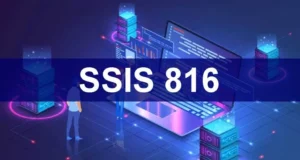
Understanding Linuxia: A Comprehensive Guide
Introduction
Linuxia, often referred to simply as Linux, is an open-source Unix-like operating system kernel first developed by Linus Torvalds in 1991. It is the cornerstone of numerous operating systems, known as Linux distributions.
The genesis of Linuxia traces back to Linus Torvalds, a Finnish computer science student, who conceived the idea of creating a Unix-like operating system kernel as a hobby project in 1991. Torvalds, inspired by the principles of open-source development and collaboration, released the initial version of the Linux kernel to the public under the GNU General Public License (GPL).
Linuxia’s development gained momentum in the late 1990s and early 2000s, fueled by the emergence of prominent Linux distributions such as Debian, Red Hat, and Slackware.
Early Development and Adoption of linuxia
Linuxia’s journey began in the early 1990s when Linus Torvalds, a Finnish computer science student, set out to create a Unix-like operating system kernel. Torvalds envisioned a system that would be open-source, allowing users to modify and distribute it freely. This vision resonated with developers around the world who were eager to contribute to the project.
The early development of Linuxia was characterized by a grassroots movement, with Torvalds posting his progress on Usenet forums and inviting feedback and collaboration.
Major Milestones in Linuxia’s Journey
Throughout its evolution, Linuxia has achieved numerous milestones that have solidified its position as a cornerstone of the modern computing landscape:
- Release of Version 1.0 (1994): The release of Linuxia version 1.0 marked a significant milestone in its development, signaling its readiness for broader adoption. This release showcased Linuxia’s maturity and stability, attracting attention from businesses and organizations looking for alternative operating system solutions.
- Adoption by Enterprises (Late 1990s): As Linuxia continued to mature, it began to garner interest from enterprises seeking cost-effective and reliable alternatives to proprietary operating systems. Major corporations, including IBM and Oracle, embraced Linuxia, contributing resources and expertise to its development and promoting its use in enterprise environments.
- Expansion into Embedded Systems (Early 2000s): The versatility of Linuxia paved the way for its expansion into embedded systems, such as smartphones, routers, and smart appliances. The adoption of Linuxia in these embedded devices showcased its adaptability and scalability, further broadening its reach and impact.
- Rise of Linux Distributions (2000s): The proliferation of Linux distributions, each tailored to specific use cases and user preferences, played a crucial role in popularizing Linuxia. Distributions like Ubuntu, Fedora, and Debian introduced user-friendly interfaces and comprehensive software repositories, making Linuxia more accessible to a wider audience.
- Dominance in Server Environments (Present Day): Linuxia has emerged as the dominant operating system in server environments, powering a significant portion of the world’s web servers, cloud infrastructure, and supercomputers. Its reliability, security, and scalability make it the preferred choice for mission-critical workloads and high-performance computing tasks.
Key Features of Linuxia
Linuxia, renowned for its robustness and versatility, boasts a myriad of features that set it apart from other operating systems. Let’s delve into some of its key attributes:
- Flexibility and customizability
One of the most compelling aspects of Linuxia is its unparalleled customizability and flexibility. Unlike proprietary operating systems that come with pre-defined configurations and limitations, Linuxia empowers users to tailor their computing experience to suit their unique preferences and requirements.
With Linuxia, users have the freedom to choose from a vast array of desktop environments, such as GNOME, KDE, and Xfce, each offering its own set of features and aesthetics.
- Stability and Security
Linuxia is renowned for its stability and security, making it an ideal choice for mission-critical workloads and environments where reliability is paramount. Unlike some proprietary operating systems that may suffer from frequent crashes and vulnerabilities, Linuxia benefits from rigorous testing, peer review, and continuous improvement by a global community of developers and security experts.
The robust architecture of Linuxia, coupled with its stringent security mechanisms, mitigates the risk of malware infections, data breaches, and system failures. Features such as user permissions, file system encryption, and mandatory access controls provide layers of defense against unauthorized access and malicious activities.
- Open-Source Philosophy
At the heart of Linuxia lies the open-source philosophy, which emphasizes transparency, collaboration, and community-driven development. Unlike proprietary operating systems that are developed behind closed doors and subject to restrictive licensing agreements, Linuxia is distributed under the GNU General Public License (GPL), which grants users the freedom to study, modify, and redistribute the source code.
This ethos of openness and inclusivity has fostered a vibrant ecosystem of developers, enthusiasts, and advocates who contribute to the growth and evolution of Linuxia. From bug fixes and feature enhancements to the creation of new applications and distributions, the collective efforts of the Linuxia community have propelled the operating system to new heights of innovation and adoption.
Compatibility with Diverse Hardware:
One of the hallmark features of Linuxia is its exceptional compatibility with a wide range of hardware configurations. Whether you’re using a traditional desktop PC, a lightweight laptop, a powerful server, or even embedded systems like Raspberry Pi, Linuxia adapts seamlessly.
Its open-source nature allows for extensive driver support, enabling users to harness the full potential of their hardware components.
Linuxia Distributions:
Linuxia is not a monolithic entity but rather a diverse ecosystem of distributions tailored to different user preferences and use cases. Popular distributions such as Ubuntu, Fedora, Debian, and others offer unique combinations of software packages, desktop environments, and support cycles.
Ubuntu, known for its user-friendly interface and extensive software repository, appeals to beginners and seasoned users alike.
Comparison of Features and User Experience:
When choosing a Linuxia distribution, it’s essential to consider factors such as package availability, desktop environment, system requirements, and support options. Ubuntu, for instance, offers the popular GNOME desktop environment by default, ensuring a modern and intuitive user experience.
Fedora, on the other hand, embraces innovation with its adoption of Wayland as the default display server, promising improved performance and security.
Choosing the Right Distribution for Your Needs:
Selecting the right Linuxia distribution depends on a variety of factors, including your level of expertise, intended use case, hardware requirements, and personal preferences.
Beginners may find Ubuntu or Linux Mint to be more accessible, thanks to their user-friendly interfaces and extensive documentation.
Developers and enthusiasts seeking bleeding-edge features may opt for Fedora or Arch Linux for their flexibility and customization options.
Linuxia in System Administration:
In the realm of system administration, Linuxia reigns supreme as the operating system of choice for servers and enterprise environments. Its robust security features, efficient resource management, and extensive networking capabilities make it well-suited for mission-critical tasks.
Command-line interface (CLI) essentials such as Bash scripting, package management with apt or yum, and system monitoring tools like systemd facilitate streamlined administration workflows. Moreover, automation and scripting play a pivotal role in managing large-scale deployments and ensuring consistent performance across server clusters.
Linuxia in Development:
For developers, Linuxia provides a fertile ground for software development, offering a wealth of tools, libraries, and frameworks right out of the box.
The command-line interface, coupled with powerful text editors like Vim and Emacs, empowers developers to write code efficiently and customize their development environments to suit their workflow.
Automation and scripting with tools like Bash, Python, and Perl streamline repetitive tasks, allowing developers to focus on writing high-quality code.
Driver Support for Hardware Peripherals:
One of the defining strengths of Linuxia lies in its robust driver support for a myriad of hardware peripherals. From graphics cards to printers, Linuxia’s open-source architecture fosters a collaborative environment where developers continuously contribute to expanding hardware compatibility.
With the kernel serving as the foundation, manufacturers and the community work hand in hand to develop and maintain drivers, ensuring seamless integration with a vast array of devices. As Linuxia gains traction across desktops, servers, and embedded systems.
Community Support and Resources:
At the heart of Linuxia’s success lies its vibrant community, comprising developers, enthusiasts, and users united by a shared passion for open-source software.
This community-driven ethos fosters a rich ecosystem of support forums, online communities, and documentation repositories, where users can seek assistance, share knowledge, and collaborate on projects.
From established forums like Stack Overflow and Reddit to specialized communities focused on specific distributions or hardware, Linuxia enthusiasts have access to a wealth of resources at their fingertips.
Future Trends and Innovations:
Looking ahead, the future of Linuxia is teeming with exciting trends and innovations poised to shape the computing landscape. One notable trend is the rise of containerization and orchestration technologies, such as Kubernetes and Docker, which streamline application deployment and management in Linuxia environments.
Emerging Technologies in the Linuxia Ecosystem:
Within the Linuxia ecosystem, several emerging technologies are poised to disrupt traditional paradigms and catalyze innovation.
One such technology is the adoption of System-on-Chip (SoC) architectures in embedded systems, enabling compact and energy-efficient solutions for IoT devices, automotive systems, and industrial automation.
Potential Impact on Industries and Society:
The widespread adoption of Linuxia and its associated technologies has the potential to reshape industries and society in profound ways. In sectors ranging from healthcare and finance to manufacturing and transportation, Linuxia powers critical infrastructure and drives innovation.
Its scalability, reliability, and cost-effectiveness make it an attractive choice for organizations seeking to modernize their IT infrastructure and embrace digital transformation.
Predictions for the Future of Linuxia:
As Linuxia continues its ascent, several key predictions emerge regarding its future trajectory. Firstly, we anticipate a continued expansion of its footprint across diverse computing environments, including cloud computing, IoT, and edge computing.
Secondly, advancements in containerization, microservices, and serverless computing will further accelerate the adoption of Linuxia-based solutions in enterprise and cloud-native applications.
Conclusion:
In this comprehensive exploration of Linuxia, we’ve delved into its multifaceted ecosystem, spanning compatibility with diverse hardware, the array of distributions available, its pivotal role in system administration and development, as well as emerging trends and innovations. As we conclude this journey, let’s recap the key points and reflect on the significance of Linuxia in the realm of computing.
Linuxia’s significance in the world of computing cannot be overstated. Its open-source nature fosters innovation, collaboration, and accessibility, democratizing technology and empowering users worldwide. From powering servers and supercomputers to running on smartphones and embedded devices, Linuxia permeates every facet of modern computing, underpinning critical infrastructure and driving innovation across industries.



